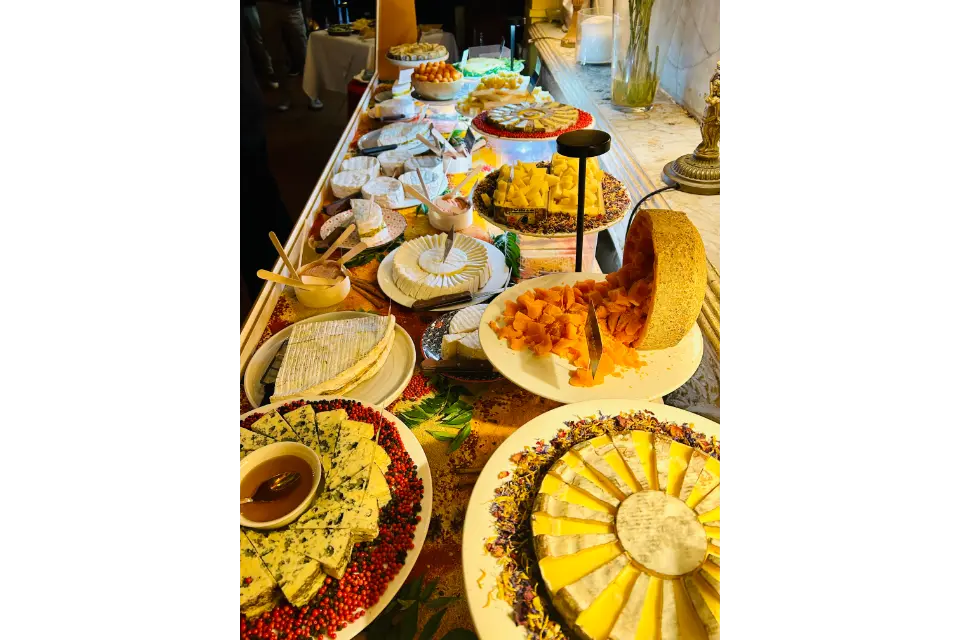
Brian Kennett
Amateur Chef and Boozy Traveling Foodie Extraordinaire
Say Cheese! A Night of Homage to Fromage at L’Angelus Club Street
French Cheese Review: Bonjour, mes amis! Your favourite foodie adventurers are back with a tale that’s sure to make you feel brie-lliant. Picture this: a balmy Singapore evening, the narrow lanes of Club Street buzzing with the usual weekday revelry, and yours truly and Spence, armed with nothing but our empty stomachs (yeah that’s a lot of volume) and a questionable amount of lactose tolerance. The mission? To survive – nay, conquer – a French Cheese Review cum tasting event at the illustrious L’Angelus Restaurant.
French Cheese Review: Table of Contents
Now, let’s get one thing straight. I love cheese. I worship at the altar of coagulated milk proteins. But as I approached the quaint facade of L’Angelus with Spence, I couldn’t help but feel a twinge of trepidation. Would my palate be sophisticated enough to distinguish between the subtle notes of grass and hay in an aged Comté? Would I embarrass myself by mistaking a noble Roquefort for a humble blue cheese from the NTUC dairy aisle? Only time, an ungodly amount of cheese, and copious amounts of wine, would tell, let’s commence this French Cheese Review.
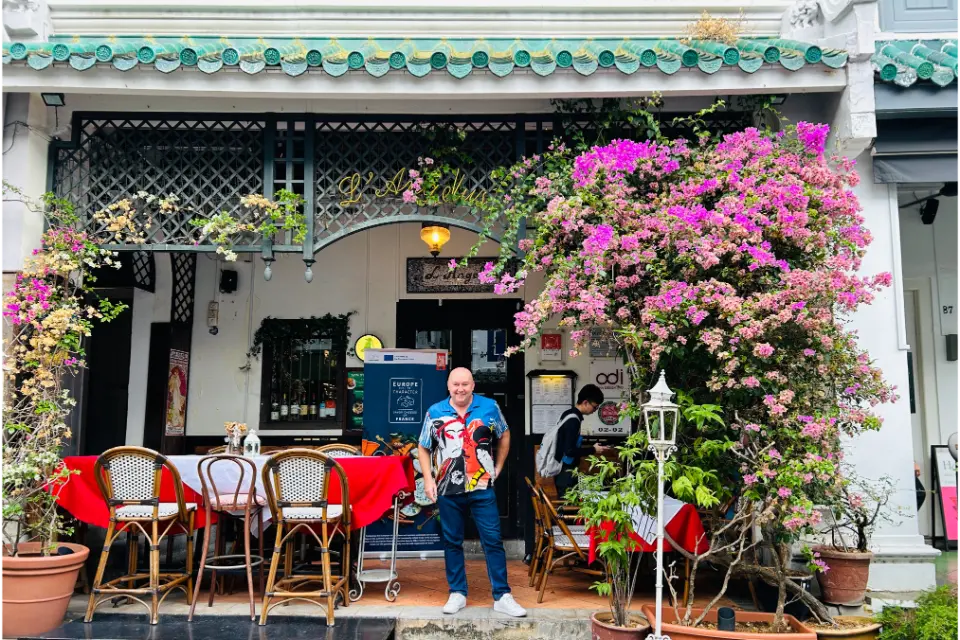
As I stepped into the restaurant, the air heavy with the pungent aroma of fermented dairy, not Spence for once, I was greeted by a sight that would make any turophile (a person who loves cheese or is a connoisseur of cheese) weak at the knees. Before me lay a spread, literally framed, that could only be described as a fromage heavenly dream. Wheels of cheese in every size, shape, and degree of mouldiness imaginable covered the surface. This is gonna be a cracking French Cheese Review.
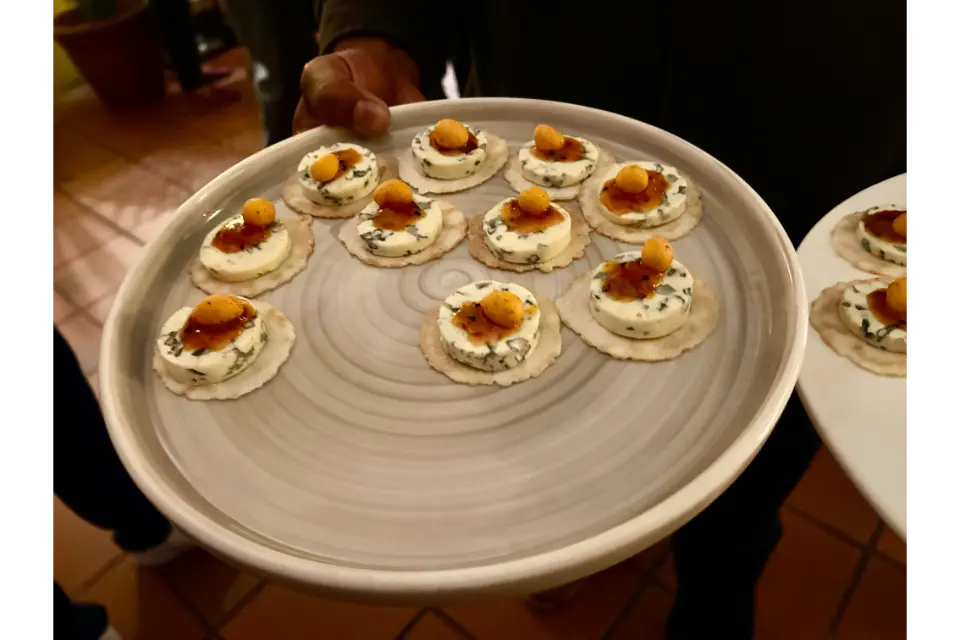
The amazing staff at L’Angelus wandered amongst us, sharing more cheese delicacies on platters, and providing us with libation after libation to pair. Have I died and gone to foodie heaven? It was as if a cheese truck had collided with a wine bar, and the resulting carnage had been artfully arranged on the tables: yes, there was de-brie everywhere…
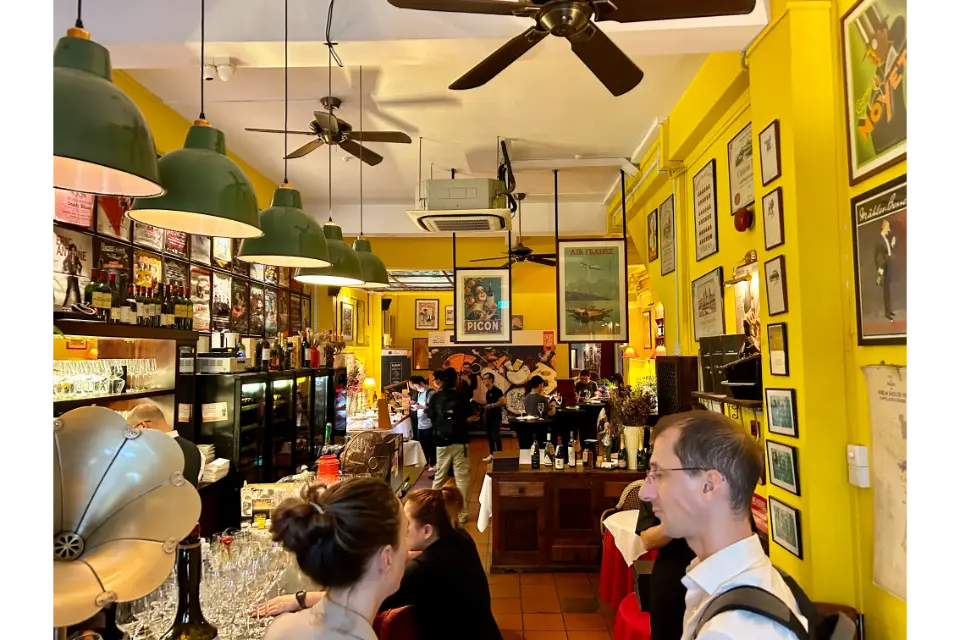
Our host for the French Cheese Review evening, a dapper Frenchman and Cheesemonger, named Francois Robin, welcomed us with the kind of enthusiasm usually reserved for long-lost relatives. “Bienvenue, cheese lovers!” he exclaimed, his eyes twinkling behind his glasses with an almost maniacal cheese glint. “Tonight, we embark on a journey through the finest cheeses France has to offer. Prepare your palates… and maybe your cardiologists (OK, I added that last bit)!”
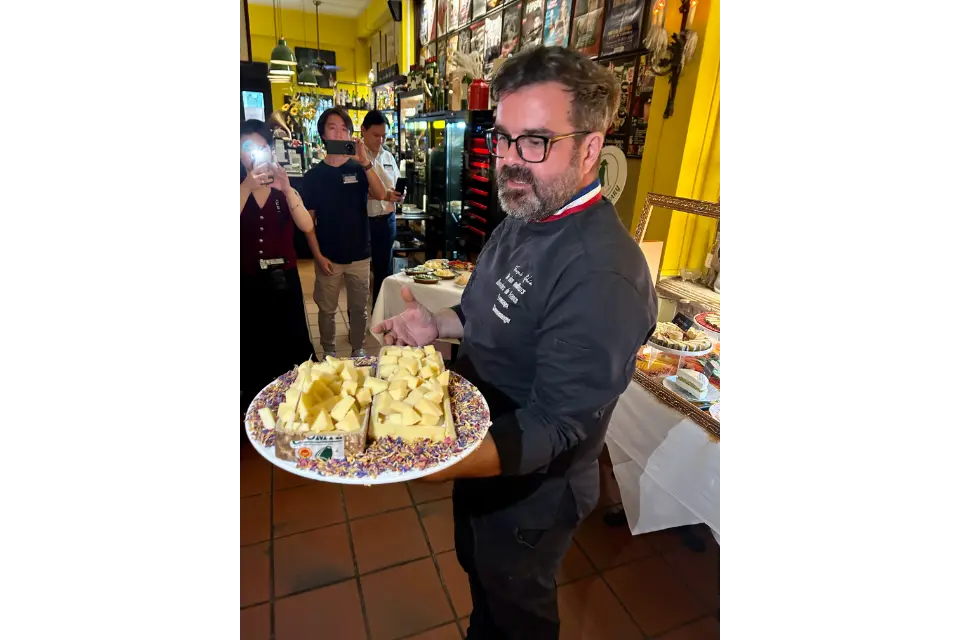
The crowd tittered nervously. I glanced around, taking in my fellow cheese adventurers and influencers. There was a mix of expats, locals, and a group of giggling Filipinos, including our mate Adrian from FoodhunterPH. All had cameras recording this cheese theatre. We were all up for it, and in for a night of dairy-based debauchery.

Francois began the French Cheese Review by introducing us to pairings of two cheeses with other unusual additions: black garlic and passionfruit pearls. He then took us on a sensory cheese journey, making us close our eyes, and pairing the cheese tasting with music. And it worked. It really was a KAPOW moment when you added them all together…
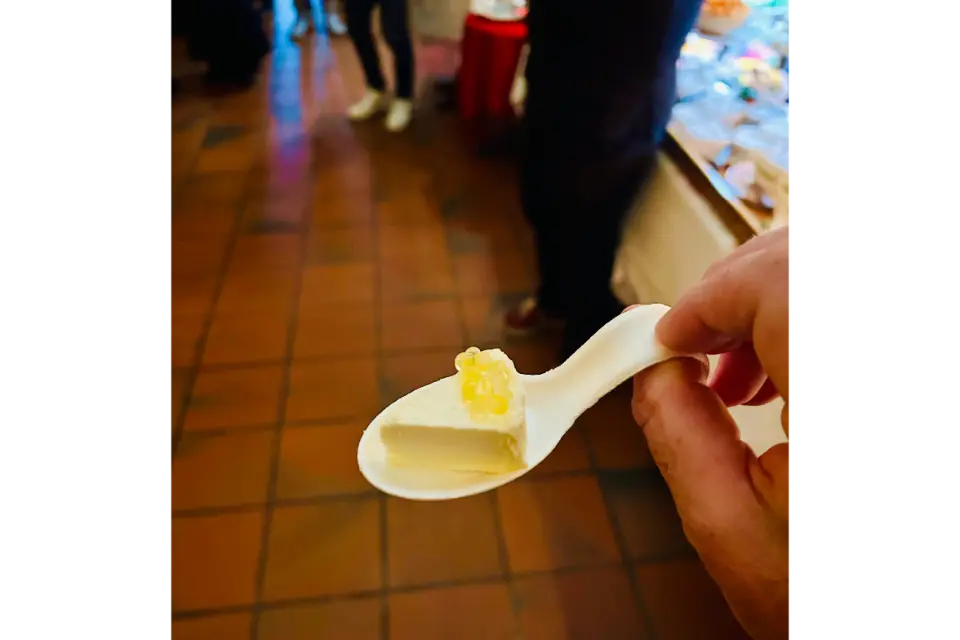
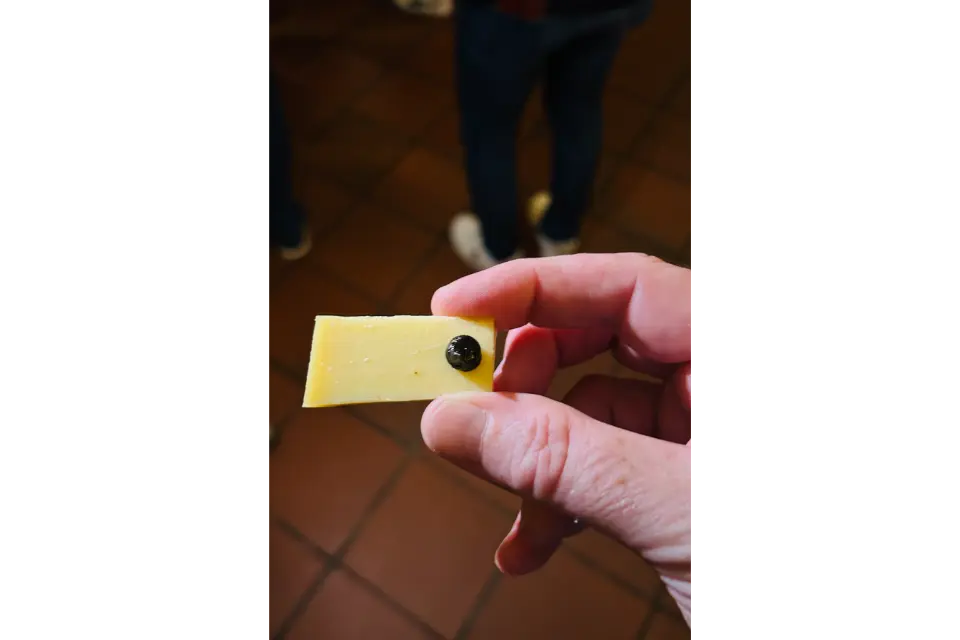
Next up for the French Cheese Review was a Camembert that was so ripe that it looked like it might sprout legs and waddle off the plate. “Ah, the Camembert!” I think Francois sighed dreamily. “It is said that Emperor Napoleon was so enamoured with this cheese that he once declared war on a country just because they couldn’t produce it in France.” Or maybe that was me after a particularly heavy night of accepting the copious amounts of accompanying wine pairing. The details are fuzzy and cheesy.
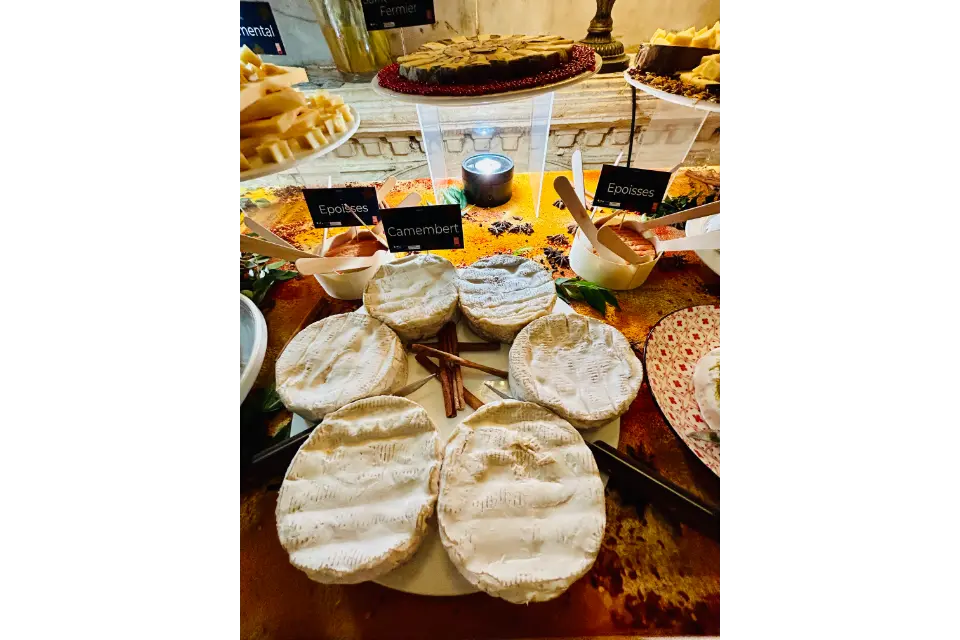
As we worked our way through the cheese lineup, things started to get… interesting. The wine was flowing freely, and with each new cheese, inhibitions lowered and lactose tolerance was tested. I watched in equal parts horror and admiration as one brave soul attempted to stuff an entire Brie into his mouth, looking for all the world like a hamster preparing for hibernation. Actually, that was Spence, I was trying to protect him.


As the night wore on at the French Cheese Review and we reached peak cheese saturation and fast-approaching coma, things took a turn for the surreal. “Shall we have a cheese wheel rolling competition down Club Street?” said Spence. “Don’t interrupt me, I’m trying to finish my scale model of the Eiffel Tower from cheese rinds and toothpicks..” said I.
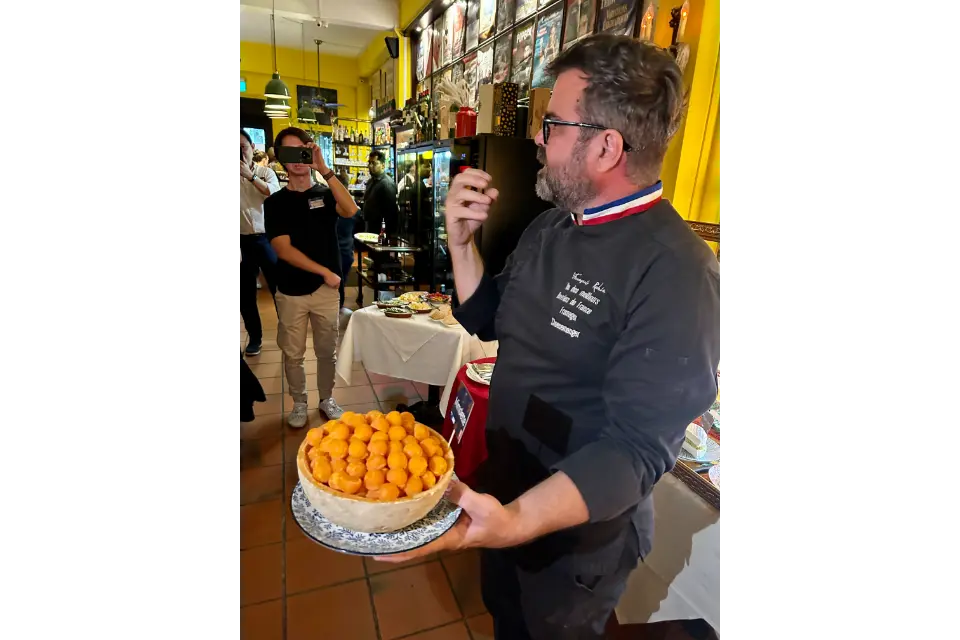
But the real star of the French Cheese Review was yet to come. With a flourish worthy of a magician revealing his final trick, Francois unveiled the pièce de résistance: Époisses de Bourgogne. “Behold!” he cried, “The King of cheeses!” “This you can just scoop out with a spoon.”
As Francois cut into the Époisses, a wave of what can only be described as ‘concentrated barnyard’ washed over us. I saw grown men weep (including me and Spence), women in the audience had to fan themselves dramatically, and I’m pretty sure one of the Filipinos fainted (I think it was Adrian). But like moths to a flame, we were drawn to this odoriferous wonder.

This stinky cheese was one that Spence and I really dug into, maybe because we both love durian. This cheese is able to clear a room faster than a fire alarm. So pungent is this cheese, it’s banned on public transportation in France. Some say it can strip paint, others claim it can raise the dead. Spence and I say: “It’s pairs perfectly with a glass, or ten, of Malbec!”.
I took a bite, and… oh. Oh my. It was as if cheese angels had descended from the cheese heavens, churned some milk with their celestial hands, and then let it age in God’s own cheese cave. It was tangy, creamy, complex, pungent and utterly sublime. I may have moaned out loud. I think I had a cheese-on. I may have proposed marriage to the cheese. The details are fuzzy, very much like my tongue right at that moment: I’d better wash it down with some Malbec.
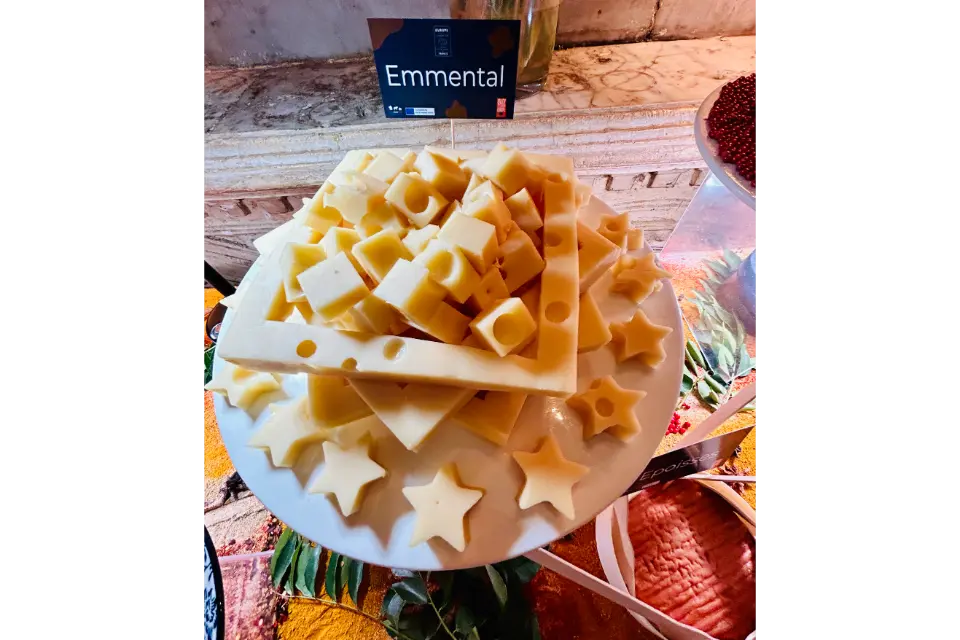
Eventually, as all good things must, the French Cheese Review came to an end. We stumbled out into the Singapore night on Club Street, our bellies full, our palates enlightened, and our clothes smelling faintly of feet. We had been gifted boxes of stinky cheese and even two cheeseboards, thanks to the EU, and despite us being Brexited.
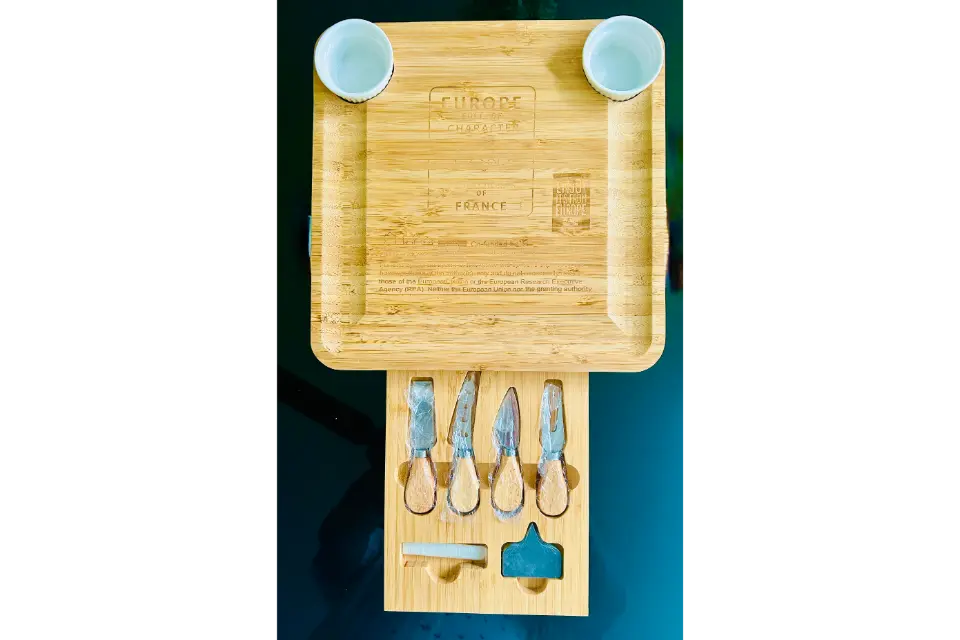
Waving to, and thanking the wonderful hosts from French Cheese, Francois, and L’Angelus, I hailed a cab for Spence and me, praying the driver wouldn’t kick us out for violating some unspoken Singaporean taxi cheese odour limit. Spence and I continued our discussion of this amazing French Cheese Review over four pints of lager each back in Siglap.

French Cheese Review: Conclusion
As we reflected on the night’s fromage festivities during the French Cheese Review over our pints at Jags in Siglap, we couldn’t help but smile. Sure, we may wake up tomorrow with dairy-induced nightmares and a newfound intolerance to lactose. But for one glorious evening, we had lived the French cheese dream. We had laughed, we had learned, we had boozed, we had met so many new friends, and we had consumed enough calcium to fortify our frail old bones until the next century.
So, dear readers, if you ever find yourself in Singapore with a hankering for some French cheese, make your way to L’Angelus on Club Street. Just remember to bring your sense of cheesy adventure, your stretchiest clothes, and maybe a clothespin for your nose. Because in the world of cheese tasting, it’s go hard or go home. And trust me, you’ll be waddling home harder than you’ve ever waddled before, just before slipping into a cheese coma.
Merci à François Robin notre fromager du soir, à @cheesycharacters_sg, à la merveilleuse équipe de L’Angelus et à nos amis désormais sortis de l’UE de nous avoir accueillis. Nous nous sommes bien marrés, quelle soirée. Merci sincèrement.
Au revoir, and may your lives be filled with cheese! This is your fromage-obsessed mates at Islifearecipe, signing off until the next edible adventure. Stay cheesy, Singapore!
Here are the luxurious cheese wonders we sampled tonight at our French Cheese Review at L'Angelus
French Blue Cheeses
- Blue d’Auvergne – A creamy, spicy blue cheese with delicate aromas.
- Fourme de Montbrison – A soft, creamy blue cheese with a distinct orange rind.
- Roquefort – A strong blue cheese made from sheep’s milk, famous for its tangy, salty flavour.
- Bleu de Gex – A French blue cheese is known for its mild taste and blue-green mould veins (Just like my varicous veins…).
Uncooked Pressed French Cheeses
- Morbier – Known for its ash layer in the middle, with a soft, smooth texture (One of my favourites because it sounds like “More Beer!!!”).
- Reblochon – A creamy, soft cheese with a washed rind and nutty flavour.
- Tomme de Savoie – A mild cheese with a greyish rind and firm texture.
- Saint-Nectaire – A semi-soft cheese with a smooth, creamy texture and hazelnut flavours.
- Pélardon – A fresh, delicate cheese with a soft texture, often served as a dessert (So good that it might just give you a Pelardon…).
- Tomme des Bauges – A mountain cheese with a strong, earthy flavour, aged with a firm rind.
Soft French Cheeses with Washed Rind
- Maroilles – A strong-smelling French cheese with a soft interior and an orange rind.
- Munster – A soft cheese with a powerful aroma, but relatively mild taste.
- Époisses – A very creamy cheese with a soft, smooth rind that ranges in colour from ivory to brick-red.
- Langres – A Champagne cheese with a soft rind, creamy texture, and a strong aroma.
- Livarot – A soft cheese with a strong, barnyard aroma and an orange-brown rind, often banded with reeds (love the name, sounds like me after a night on the p!ss…)
- Pont-l’Évêque – A soft cheese with a delicate, creamy texture and a mild flavour.
Cooked Pressed French Cheeses
- Comté – A firm, nutty cheese from the Jura region, aged for months (All I can think of is Tom Conte acting in Merry Xmas Mr Lawrence when I hear this cheese).
- Emmental – A Swiss cheese with large holes and a sweet, nutty flavour.
- Gruyère – A firm, yellow cheese, known for its complex flavours, often used in fondue.
- Beaufort – A firm, dense cheese with a fruity, slightly nutty flavour, known for its smooth, golden rind.
- Cantal – A hard cheese with a dense, crumbly texture and mild flavour.
- Raclette – A semi-hard cheese, traditionally melted, with a creamy, nutty flavour (Love this, I did a reverse-seared tomahawk once with Raclette: WOOF!!!).
Fun French Cheese Facts
France holds numerous cheese competitions each year to crown the best affineur, cheesemaker, and top cheeses, including goat cheeses. These prestigious events include the Concours National des Fromages, the Salon du Fromage, and the Mondiale du Fromage, the ultimate cheese-making world championship. In the Mondiale, contestants from around the globe are tasked with making and maturing cheese, before carefully cutting and sculpting it for a beautifully presented cheese platter.
Interestingly, French people don’t say “fromage” for photos like English speakers say “cheese” to smile. If you try saying “fromage,” you’ll end up looking rather odd with puckered lips, almost like a goat! Instead, the French use the word “ouistiti,” which means “marmoset.” Give it a try—it’ll pull your smile out naturally!

And, finally, as President Charles de Gaulle once famously remarked, “How can you govern a country with 246 varieties of cheese?” Well, it turns out ol’ Charlie-boy underestimated the French cheese count massively—there are far more! While the exact number is unknown, it’s estimated that there are over 1,000, possibly 1,300, types of cheese in France. So, if you’re a true cheese lover, you could try a different cheese every day for three years—a challenge I’d happily accept with many a cheese coma to ensue…
Let's honour the French Cattle Breeds that made this French Cheese Review possible
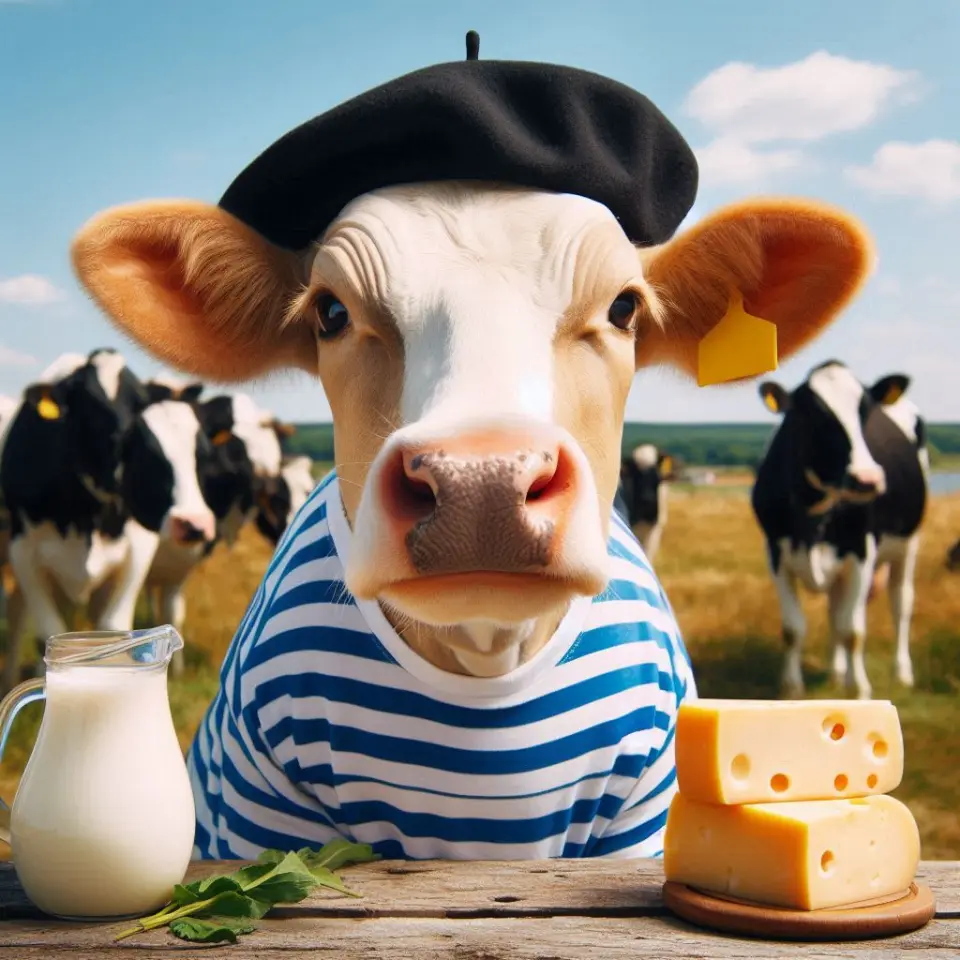
No cows were harmed during the writing of this French Cheese Review. In fact this section is an homage to the cows that actually enable the cheese to be made in the first place. So, mooove over fromage, here come the cows… Here come the seven cows that were responsible for all the French cheese we were sampling that night.
In fact, I think I’ll milk a few more cow puns that you’ll find udderly hysterical I am sure. I’m game, no bull. These cows are your Dairy Godmother’s of your fromage fantasies so treat them well. If you do I think you’ll find their cheese is un-brie-lievable.
Prim'Holstein
The Prim’Holstein, also known as the French Friesian, is the most common dairy cattle breed in France. Renowned for its high milk production, this black and white cow is a cornerstone of the French dairy industry. Originating from Dutch Friesian cattle imported in the 19th century, the Prim’Holstein has been selectively bred to thrive in French farming conditions.
I met one of these cows once in the winter in France, I tell you I was Friesian my udders off…
These cows are known for their docile temperament, large frame, and impressive udders. With an average annual milk production of around 9,000 litres per cow, the Prim’Holstein plays a crucial role in meeting France’s dairy needs, from fresh milk to the production of world-famous French cheeses.
Aubrac
The Aubrac is a rustic breed hailing from the Aubrac plateau in south-central France. Known for its distinctive fawn coat with lighter circles around the eyes (often referred to as “eyes lined with mascara”), this breed embodies the rugged beauty of its mountainous homeland. Aubrac cattle are prized for their hardiness, ability to thrive on poor pastures, and excellent maternal instincts.
Originally a triple-purpose breed used for milk, meat, and draft work, modern Aubracs are primarily raised for their high-quality beef. The breed’s meat is celebrated for its flavour and tenderness, often associated with the diverse flora of the Aubrac region’s pastures.
Abondance
Named after the Abondance Valley in the Haute-Savoie department of France, the Abondance breed is a medium-sized dairy cow known for its distinctive appearance and milk quality. These cows sport a striking mahogany-red coat with white markings, including a white head with red eye patches. Abondance cattle are well-adapted to the harsh Alpine climate and are capable of grazing on steep mountain pastures.
Their milk, rich in protein and fat, is particularly prized for cheese-making. It’s an essential ingredient in several PDO (Protected Designation of Origin) cheeses, including Reblochon, Abondance, and Beaufort. The breed’s ability to produce high-quality milk on a grass-based diet makes it a favourite among traditional and sustainable dairy farmers.
Normande
The Normande breed, originating from Normandy in northwestern France, is easily recognizable by its unique coloration: white with brown or reddish-brown patches and characteristic spectacles around the eyes. This dual-purpose breed is valued for both its milk and meat production. Normande milk is particularly rich in fat and protein, making it ideal for butter and cheese production, especially the famous Camembert.
The breed is known for its robustness, longevity, and ability to efficiently convert grass into milk and meat. Normande cattle are also appreciated for their docile temperament and adaptability to various farming systems, from intensive dairy operations to extensive grazing.
Salers
The Salers breed, with its deep mahogany-red coat and lyre-shaped horns, is one of the oldest and most distinctive French cattle breeds. Originating from the volcanic region of Cantal in central France, these cattle are renowned for their hardiness, longevity, and adaptability to harsh environments. Originally a triple-purpose breed, modern Salers are primarily raised for beef production.
The meat is known for its flavour, tenderness, and marbling, attributed to the breed’s ability to thrive on diverse mountain pastures. Interestingly, Salers cows are known for their strong maternal instincts and often require the presence of their calves to let down their milk, a trait that has led to unique cheese-making traditions in their native region.
Montbéliarde
The Montbéliarde is a dairy breed originating from the Jura mountains in eastern France. Characterized by their red and white coat, these medium-sized cows are known for their excellent milk production and quality. Montbéliarde milk is particularly well-suited for cheese-making, playing a crucial role in the production of PDO cheeses like Comté, Reblochon, and Morbier.
The breed is valued for its robust health, fertility, and longevity, often outperforming other dairy breeds in these aspects. Montbéliarde cattle are well-adapted to both intensive farming systems and mountain pastures, making them a versatile choice for dairy farmers across France and increasingly, around the world.
Simmental
While originally of Swiss origin, the Simmental has become an important breed in French agriculture, particularly in the eastern regions bordering Switzerland. Known in France as Simmental Française, this large, dual-purpose breed is characterized by its distinctive white and golden to dark red colouration. Simmental cattle are valued for their ability to produce both high-quality milk and meat.
Their milk is rich in protein and well-suited for cheese production, while their large frame and muscular build make them excellent beef cattle. The breed is known for its docility, good fertility, and ease of calving. French Simmentals have been selectively bred to adapt well to various French farming conditions, from lowland pastures to mountainous areas.


